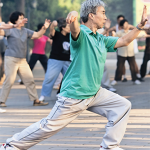
Simon Mayer / shutterstock.com
While medical advances in rheumatoid arthritis (RA) have led to improvements in disease control and quality of life for patients worldwide, the rate for stable remission remains low.1 Management of RA symptoms is traditionally accomplished through a combination of medications and nonpharmacological interventions.2 This approach can prevent the development of secondary adverse health outcomes.
Two common nonpharmacologic interventions are physical therapy and physical activity. The scientific evidence for these interventions continues to grow. However, not all medical providers are aware of the benefits of physical therapy and physical activity, nor do they know when to prescribe physical therapy.2,3
When it comes to physical therapy, physiotherapists (PTs) provide insightful knowledge. PTs rely on physical (e.g., functional, range of motion, muscle strength, or postural) and behavioristic assessments (e.g., behaviors associated with fear-avoidance beliefs) when tailoring interventions to increase bodily function or physical activity in general.2,4-6 When a home-exercise program is prescribed, 50–65% of patients fail to adhere to the program. The presence of pain, low levels of physical activity and low self-efficacy are believed to create barriers between the patient and the desired treatment goal of increased physical activity.7,8
A review found that clinical practice guidelines regarding physiotherapy lacked detail concerning intensity, frequency, duration and type of activity for desired effects. Despite this, guidelines keep emphasizing the importance of these nonpharmacological interventions.2,6,9
This article describes how physical therapy, through physical activity and exercise, can benefit patients with RA and compares the impact of these nonpharmacologic interventions with outcomes of medical therapy. Further, this article highlights the clinical reasoning behind the design of exercise interventions for patients with RA.
Defining Physical Activity
The terms physical activity and exercise are often used interchangeably by patients and clinicians. However, physical activity is defined as any bodily movement produced by skeletal muscles that requires energy expenditure. This movement includes daily activities, such as walking, cycling or participating in sports.
What makes exercise different? Exercise, considered a subset of physical activity, is planned, structured and repetitive, and has a final or an intermediate objective to improve or maintain physical fitness.10 Exercise can be further divided into aerobic or anaerobic exercise. Aerobic exercise (commonly known as cardio) is low- to high-intensity exercise that relies mainly on the aerobic energy-generating process, requiring a high supply of oxygen to adequately meet energy demands. Generally, light- to moderate-intensity activities (e.g., walking, cycling or swimming) are sufficiently supported by aerobic metabolism.


